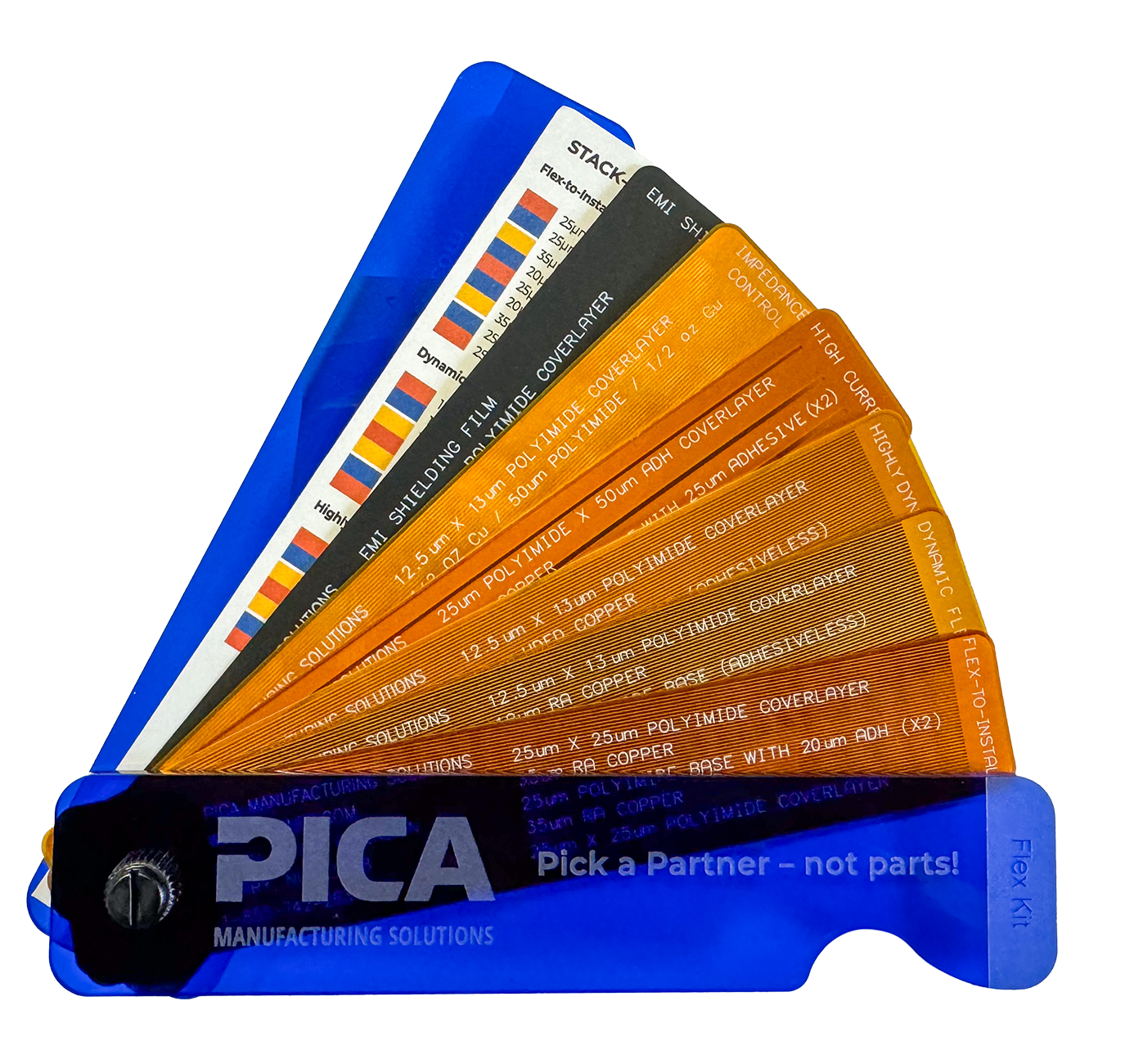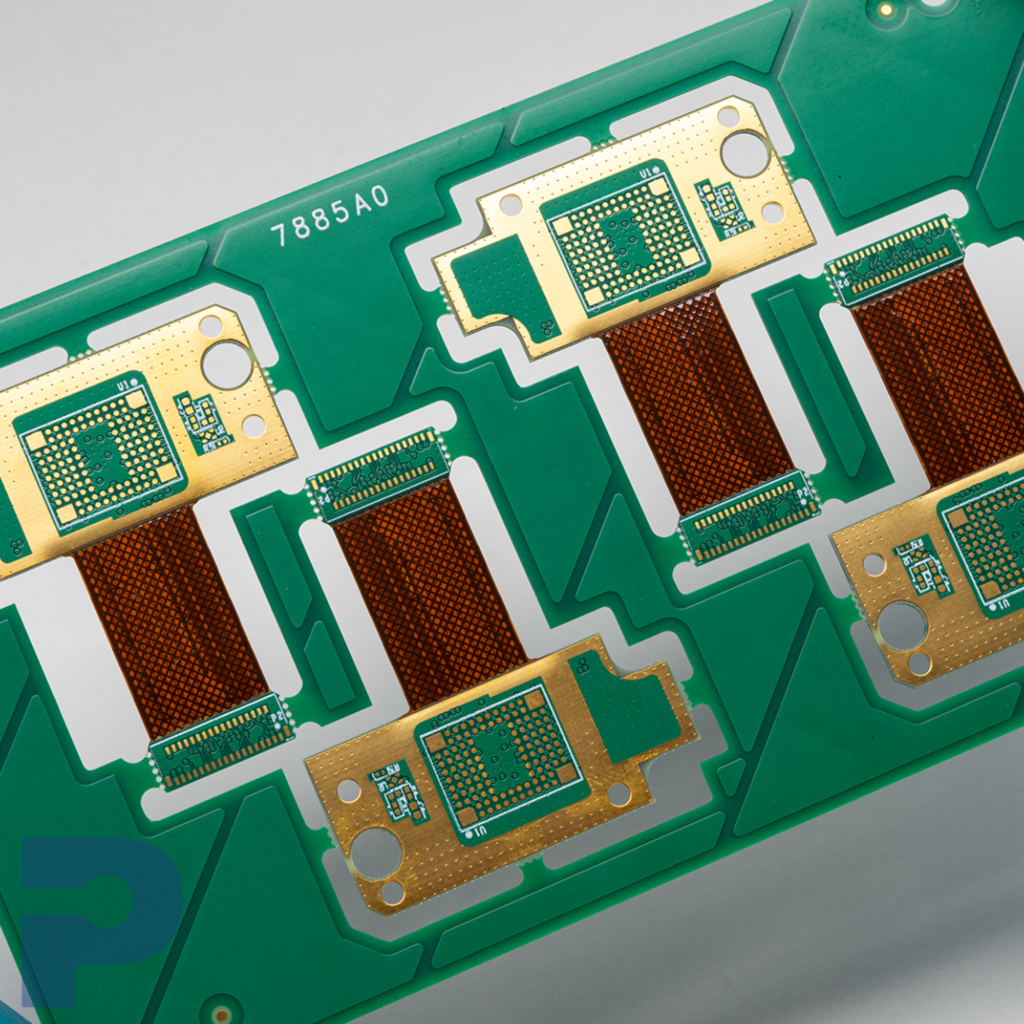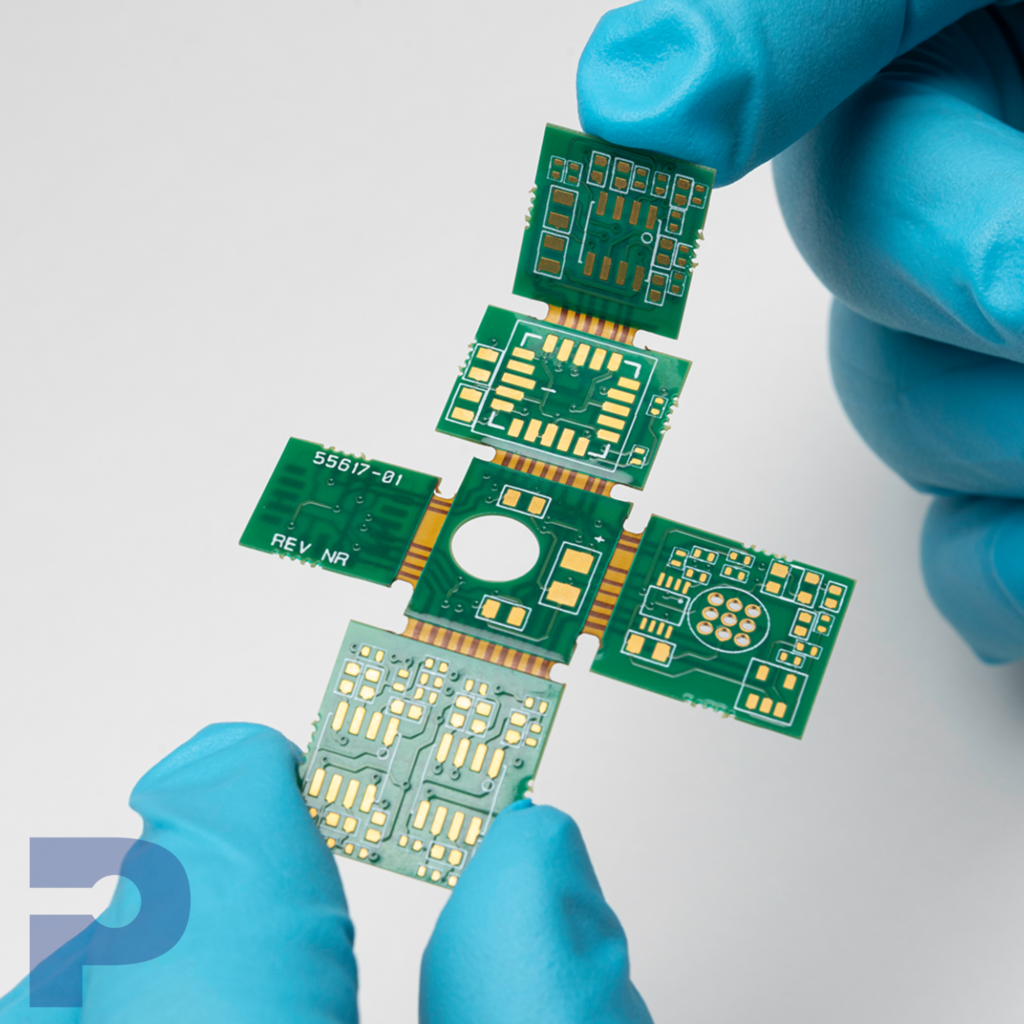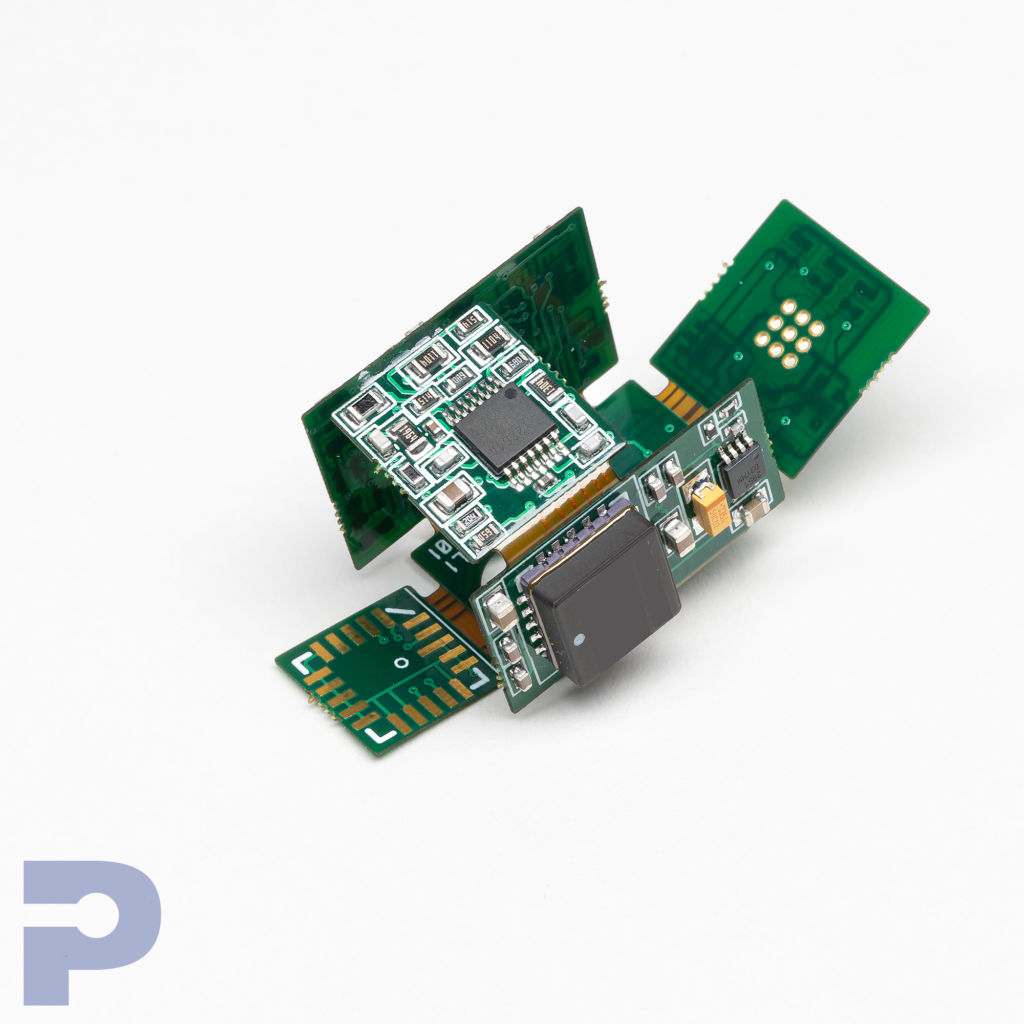For technical information on PICA’s Rigid Flex Printed Circuit Board capabilities, click the button below.
Benefits
Optimized Space Utilization: Rigid flex circuit boards are uniquely suited to fit into compact and irregularly shaped spaces, making them ideal for electronic devices where space is at a premium and contributing to the miniaturization of electronic devices.
Enhanced Reliability: The integration of rigid and flexible circuits into a single unit eliminates the need for connectors and interconnecting cables, which are common in traditional PCB designs. It lowers the risk of connection failures, enhancing the overall reliability of electronic systems, especially in dynamic applications where movement can be a factor.
Superior Durability: Rigid flex circuit boards combine the resilience of rigid PCBs with the flexibility of flex circuits, resulting in a product that excels in resisting vibrations, shocks, and mechanical stress.
Weight Reduction: These circuits are inherently lighter than traditional rigid PCBs due to the use of flexible materials and the elimination of bulky connectors and cables.
Design Versatility: Rigid flex circuit boards offer an unparalleled level of design freedom, far surpassing that of standard rigid boards. They support complex three-dimensional configurations, bending, and folding, which opens new possibilities for innovative, space-efficient designs.
Applications
Consumer Electronics: Rigid flex PCB design is a perfect match for consumer electronics like smartphones, tablets, and wearable devices. Their ability to bend and fold allows for more creative and compact designs, which is crucial in devices where space is limited, and weight reduction is essential.
Medical Devices: In the medical field, rigid flex PCB is ideal for applications such as pacemakers, hearing aids, and advanced medical implants. Their flexibility is key for devices that require conforming to the human body’s contours, while their reliability and biocompatibility make them safe for both internal and external medical applications. They are also used in various diagnostic equipment, where their space-efficient designs enable more portable and user-friendly devices.
Automotive: In automotive applications, the rigid flex PCB is used in control systems, lighting, and entertainment systems. Their ability to conform to the irregular shapes within a vehicle, combined with their durability against vibrations and temperature variations, makes them especially suitable for modern automotive designs that require both aesthetic appeal and functional resilience.
Industrial Equipment: Rigid flex PCB is well-suited for industrial control systems, robotics, and sensors. Their ruggedness allows them to withstand harsh industrial environments, including exposure to chemicals, extreme temperatures, and mechanical stress.
Defense Aerospace: In the defense and aerospace sectors, the rigid flex PCB design utilized in satellites, missiles, and other advanced defense systems. Their ability to endure extreme environmental conditions, including intense vibrations and temperature extremes, is crucial in these applications. The lightweight nature of rigid-flex circuit board contributes to the overall efficiency and performance of aerospace systems, where weight is a critical factor.

Compliance: Ensuring Safety and Performance in Flexible Printed Circuit Manufacturing
When developing and manufacturing flexible printed circuits (FPCs), adhering to industry standards ensures reliability, safety, and performance. Two pivotal standards...
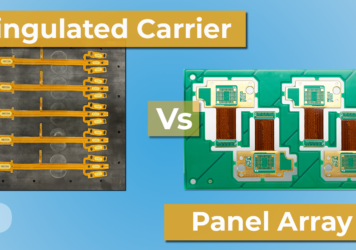
Navigating SMT Assembly Methods for Flexible Circuits Part 2
Part 2: Comparing Panel Array vs. Singulated Carrier AssemblyIn the first part of this series, we explored the key considerations...
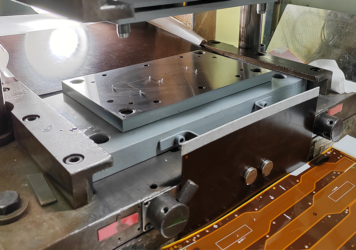
Understanding Tooling in Flexible Printed Circuit Manufacturing: Mechanical Tooling (Part 1)
At PICA Manufacturing Solutions, producing high-quality Flexible Printed Circuits (FPCs) involves a variety of specialized tooling and processes. This blog...

Optimizing Design for Flexible Circuits Part 2: Advanced Design Strategies for Flexible Circuits
In the continuation of our series on optimizing flexible circuit designs, we delve into additional critical aspects that ensure functionality...
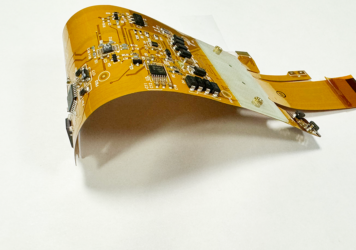
Optimizing Design for Flexible Circuits: Best Practices and Considerations
Flexible circuits are essential in today’s compact, lightweight devices—thanks to their ability to bend, twist, and conform to tight spaces....
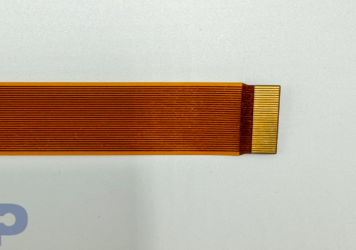
Enhancing Polyimide Surface Properties for Superior Bonding in Flexible Printed Circuits
The general scope of this article is to discuss methods for treating and characterizing the surface of Kapton, a polyimide...

Case Study: Innovating Medical Healthcare Technology with Rigid Flex PCB Design
Customer Overview: The customer in this case study is a leading company in the healthcare technology sector, known for its...
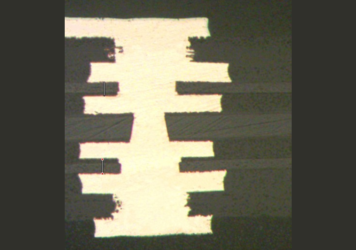
6-Layer ELIC Rigid Flex Printed Circuit Board / Rigid Flex PCB
A 6-Layer ELIC (Every Layer Inter-connect) Rigid Flex Printed Circuit Board / Rigid Flex PCB is an advanced and...
Request Your PICAKit Today
We want you to take a look at what we can produce for you by offering you a PICAKit which includes a variety of flexible pcb, shields, and flat flexible cables.
